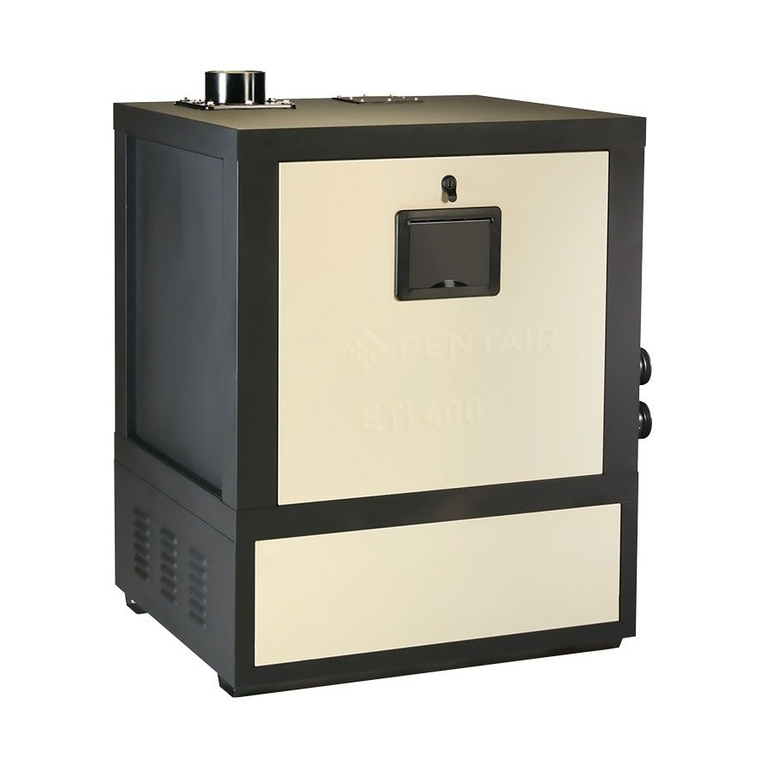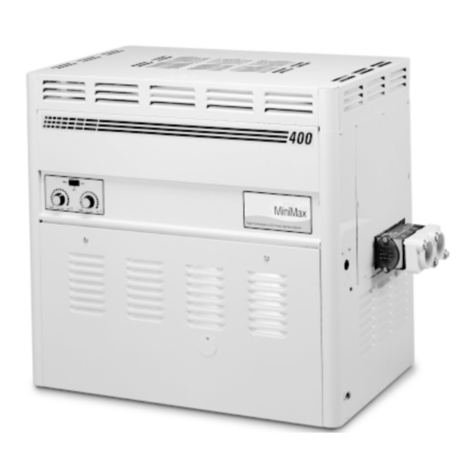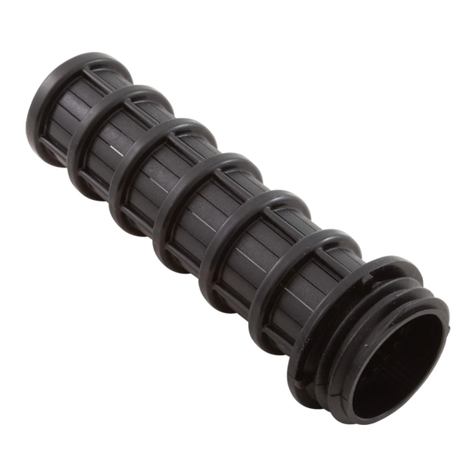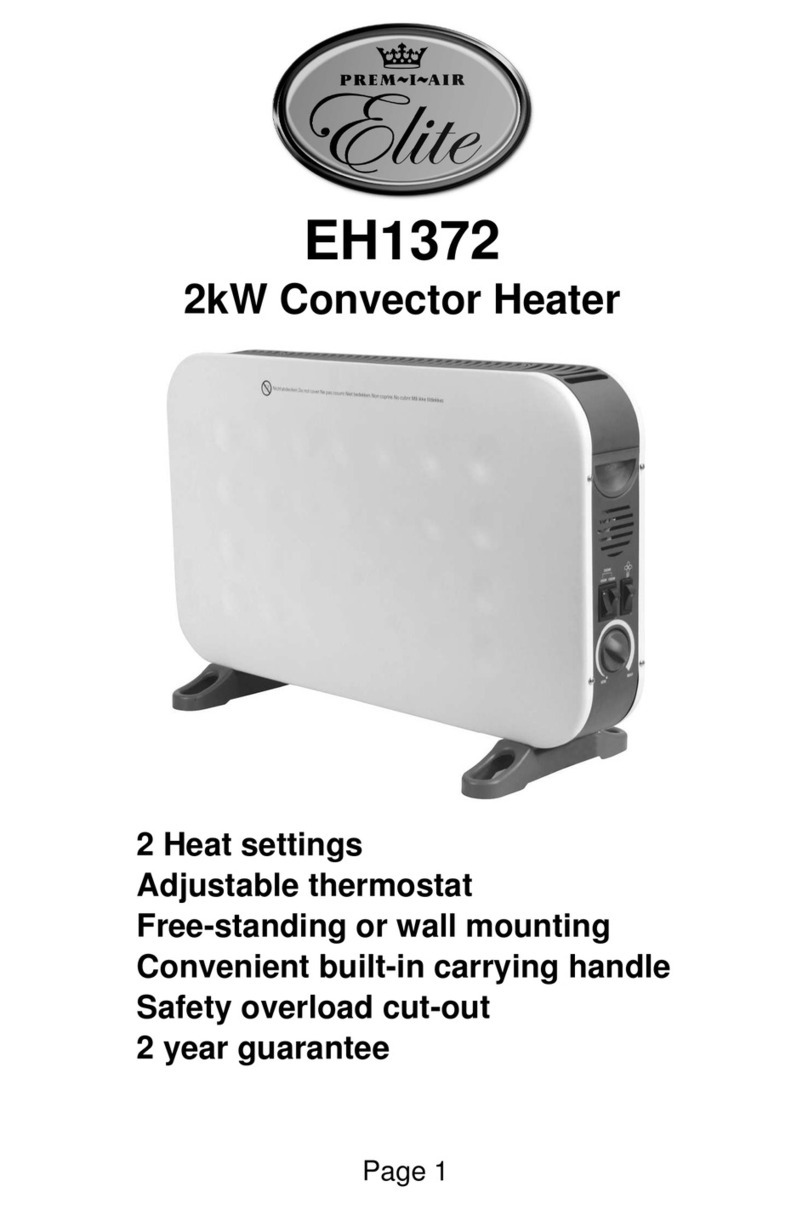Envirovent heatSava User manual


SHOULD YOU ENCOUNTER ANY PROBLEMS INSTALLING THIS UNIT CALL
Contents
Page
01 Introduction 2
02 Box Contents 3-4
03 Technical Specications 5-6
04 Safety 7
05 Installation 8-17
Installation with wall seal 17-18
06 Controls 19
07 Maintenance 19-20
08 Wiring Diagrams 21-22
Scan the QR code to watch the step by step installation video

AFTER INSTALLING THIS UNIT PLEASE LEAVE THIS INSTALLATION GUIDE WITH THE USER
DO NOT THROW AWAY
02
Gold Standard After Sales Service
In the unlikely event of any on-site installation problems or queries regarding the EnviroVent heatSava, just call our
hotline number. We will take your details and appoint a regional installation manager to call you back to discuss the
problem. In the majority of cases, the problem can be resolved over the phone. However, in cases where the problem
cannot be resolved over the phone, we will arrange a visit from our Gold Standard Engineer. They will meet with your
contractor/direct labour on-site to discuss and resolve the problem, will provide training and also give advice on the
installation of the unit.
INSTALLER HOTLINE: 07540 050 147
Ensure that this product is treated with care, installed and maintained correctly i.e. for
the life of the building. Remember, if you have any problems please call our dedicated
Technical Team.
Thank you for choosing EnviroVent
The fastest growing ventilation company in the UK
01 Introduction

SHOULD YOU ENCOUNTER ANY PROBLEMS INSTALLING THIS UNIT CALL
02 Box Contents
heatSava Unit1
Heat Cell2
SELV (optional)3
Instructions Guide4
Halo5
Wall Seal6

AFTER INSTALLING THIS UNIT PLEASE LEAVE THIS INSTALLATION GUIDE WITH THE USER
DO NOT THROW AWAY
04
02 Box Contents
Description Quantity Item
heatSava Unit 1x
Heat Cell 1x
SELV (optional) 1x
Fixing Kit 1x
No.8 x 1½Screws -
(Fixing Kit Contents) 11x
M5 x 40 Screws -
(Fixing Kit Contents) 3x
Red Wall Plugs -
(Fixing Kit Contents) 3x
Wall Kit Contents
Halo (optional) 1x
Wall Seal (optional) 1x

SHOULD YOU ENCOUNTER ANY PROBLEMS INSTALLING THIS UNIT CALL
03 Technical Specications
Unit Dimensions
Front Assembly
(Supply Fan)
Badge
Centre Assembly
(Electronics)
Rear Assembly
(Extract Fan)

AFTER INSTALLING THIS UNIT PLEASE LEAVE THIS INSTALLATION GUIDE WITH THE USER
DO NOT THROW AWAY
06
03 Technical Specications
Heat Cells Options
Cell - Ø150mm / 500 Wall Depth
Cell - Ø100mm / 500 Wall Depth
Cell - Ø150mm / 600 Wall Depth
Cell - Ø100mm / 600 Wall Depth
Cell - Ø150mm / 430 Wall Depth
Cell - Ø100mm / 430 Wall Depth
Cell - Ø100mm / 310 Wall Depth
Cell - Ø150mm / 310 Wall Depth

SHOULD YOU ENCOUNTER ANY PROBLEMS INSTALLING THIS UNIT CALL
04 Safety
Never modify the fan or electronics•
Do not store inammable products in the vicinity of this product•
This appliance is not intended for use by persons (including children) with•
reduced physical, sensory or mental capabilities, or lack of experience and
knowledge, unless they have been given supervision or instruction concerning
use of the appliance by a person responsible for their safety. Children should be
supervised to ensure that they do not play with the appliance.
For a bathroom application the power supply should be installed outside the•
bathroom as it is 230V.
This unit draws air in from atmosphere and you must ensure that any emissions•
from any other systems such as gas or oil boilers, do not contaminate the air
entering the heatSava product. Therefore, before installation, consider where
the external cowl will be located in relation to any boiler ues etc. Externally,
we recommend that the unit to be positioned a minimum distance away of; 1
metre horizontally, 1 metre below or 3 metres above any boiler ue etc. Also
refer to Building Regulations, Document J – Combustion Appliances & Fuel
Storage Systems.
In kitchens, if the unit has to be tted above a cooker, it should be installed a •
minimum distance of 650mm above electric cookers and 750mm above gas
cookers, and not have a pullcord tted.
Be sure to have read and understood these instructions before
beginning the installation process. Electrical Assembly
When wiring the unit in, a suitable disconnect device such as
a switched fused spur should be used, do not use a plug. The
means of disconnecting the unit from the mains power supply
must be incorporated in the xed wiring in accordance with the
wiring rules.
There must be a necessity to allow disconnection of the
appliance from the supply after installation, unless the appliance
incorporates a switch complying with the wiring rules. The
disconnection may be achieved by incorporating a switch in
the xed wiring in accordance with the wiring rule.
The electrical install comprises of a power supply unit (Fig.1) or a
low voltage box - SELV (Fig.2). The 2 and 3 core cables are to be
supplied by the installer. See pages 21-22 for wiring diagrams..
Connect 3 core
cable into unit
Connect 2 core cable
from SELV box into unit
Connect 3 core
cable into SELV
3 core2 core
SELV Box
Fan
Board
Power
Supply
SELV
MAINS
Fig.1
Fig.2
IPX4 Rated
This unit has been tested to IPX4 and is suitable for installation
within Zone 1 of bathrooms. However, we recommend that
you must position the unit above any water devices such
as taps, showerheads or jets and ensure water is not aimed
directly at the unit. Do not use jets or shower heads etc to
clean this unit.

AFTER INSTALLING THIS UNIT PLEASE LEAVE THIS INSTALLATION GUIDE WITH THE USER
DO NOT THROW AWAY
Introduction
Designed for through the wall installation, the heatSava is ideal
for both refurbishment and new build properties. The outside
diameter of the heat exchange casing is smaller than a standard
wall sleeve and can therefore utilize an existing one already in
place. The heatSava also takes into account the complexities
of different wall depths to offer 4 different main lengths that the
heat exchange casing is manufactured to (see page 6). The unit
is installed from the inside out to allow for ease of installation in
high-rise applications.
Built with intelligent humidity tracking controls means no
user intervention is required and heatSava silent-night mode
prevents noisy running at night. The heatSava is exceptionally
versatile and can be installed horizontally or vertically in 4
different positions through 360° (Fig.1).
Pre-Installation Checklist
Before starting the installation process, ensure that you have all
the necessary equipment and the following:
Check wall depth•
heatSava Unit•
Heat Cell•
Fixing Kit•
Wall Seal Kit (optional)•
Low Voltage Box (optional)•
Choose position and orientation•
Heat Cell Orientation
When tting the heat cell into a wall, ensure that the cowl end is
correctly orientated with the end always facing down. (Fig 2.)
Clearance
The heatSava has been designed to allow easy installation into
an existing wall sleeve which is located near the ceiling. When
core drilling into an existing wall, make sure you have enough
space to move around and distance between the wall and any
objects nearby i.e cupboards (Fig.3).
Ensure the unit is sited in a suitable position for adequate
clearance on all sides for easy access to the unit for maintenance
purposes and to ensure that access to the release clips on the
front cover is not inhibited.
08
05 Installation
Fig.2
Fig.1
3
12
6
9Cell
logo
Cell
Fig.3
heatSava
cupboard
LEAVE ADEQUATE CLEARANCE

SHOULD YOU ENCOUNTER ANY PROBLEMS INSTALLING THIS UNIT CALL
05 Installation
Clearance
First measure the wall depth.
If installing into a new build application, we recommend that
the unit should be installed in the position below (option 1). If
installing into an existing wall sleeve which is located near to the
ceiling, the heatSava can be installed horizontally or vertically
(options 2-4).
Ceiling
Ceiling
30mm
min
30mm
min
Option 1
Option 3 Option 4
Option 2
20mm
min
20mm
min
Cover release
clips

AFTER INSTALLING THIS UNIT PLEASE LEAVE THIS INSTALLATION GUIDE WITH THE USER
DO NOT THROW AWAY
10
05 Installation
Before core drilling, determine which heat cell will be
inserted through the wall and core drill accordingly
(Fig.2A & 2B).
Using the template provided, align it with a spirit level
against the wall and draw around the circle for the location
of the core hole (Fig 1A).
For the 100m model, drill a hole with a diameter of 107mm or
117mm if using a wall seal. For the 150mm model drill a hole
with a diameter of 158mm or 162mm if using a wall seal. If
tting with a wall seal see pages 17-18.
Mark out the locations for the 3 xing holes. Use either A or B
depending on how smooth the wall surface is (Fig 1B).
(The rear assembly has 6 feet to help when xing to uneven surfaces)
Marking Out - Template Sheet
Installation Process - Core Drilling
Fig.1A Fig.1B
Fig.2A Fig.2B

SHOULD YOU ENCOUNTER ANY PROBLEMS INSTALLING THIS UNIT CALL
Using a screwdriver remove the badge and undo screw
(Fig.3A). Next remove the front cover of the unit using the
release clips as shown.
Installation Process - Front Cover
05 Installation
To remove the front cover, release the top clip rst and then
release the two clips at the bottom by pushing in at the points
indicated on the centre assembly of the unit (Fig.3B).
Fig.3A Fig.3B
Using a spirit level, align the rear assembly of the unit to
the wall ensuring it lines up with the marked out xing
holes locations (Fig.4A).
Installation Process - Rear Assembly
Fig.4A
Drill 3x xing holes and t 3x wall plugs.

AFTER INSTALLING THIS UNIT PLEASE LEAVE THIS INSTALLATION GUIDE WITH THE USER
DO NOT THROW AWAY
12
Detach the electronics lid from the centre assembly by
removing the screws. Then using a screwdriver pierce
through the grommet (Fig.6A).
Feed the power cable through the hole. Push the fan cable
through the hole and secure using the grommet. Inside connect
the fan cable to the fan board (Fig.6B).
Installation Process - Centre Assembly
Fig.6A Fig.6B
There are 3 cable entries on the rear assembly. Locate
the one suitable for the install and pull the mains cable
through the selected entry hole (Fig.5A).
Fig.5A Fig.5B
Fit the rear assembly to the wall using the 3 screws (Fig.5B).
05 Installation
Installation Process - Rear Assembly

SHOULD YOU ENCOUNTER ANY PROBLEMS INSTALLING THIS UNIT CALL
05 Installation
Pull the mains cable through the entry hole and pierced
grommet in the centre assembly. Connect the cable to the
mains supply or SELV board depending on the model being
installed (Fig.7A). See pages 21-22 for wiring diagrams.
Installation Process - Centre Assembly
Fig.7A Fig.7B
Now securely x the centre assembly to the rear assembly
together on the 4 xing points using the screws provided
(Fig.7B).
Detach the strip from the electronics lid and securely x it
in place to restrain the cable (Fig.8A).
Make sure all cables are connected correctly, then x the
electronics lid back on using the screws provided (Fig.8B).
Fig.8A Fig.8B

AFTER INSTALLING THIS UNIT PLEASE LEAVE THIS INSTALLATION GUIDE WITH THE USER
DO NOT THROW AWAY
14
05 Installation
The next step is to t the pullcord. Depending on the
orientation of the unit, the pullcord can be situated in 4
positions (Fig.9A & 9B).
Fig.9A Fig.9B
Choose the suitable one for the install and make sure the
pullcord is always facing downwards.
Installation Process - Pullcord
Dependent on the installation orientation, when tting the
pullcord, make sure it is neatly tucked within the grooves.
(Fig.10A & 10B).
Fig.10A Fig.10B

SHOULD YOU ENCOUNTER ANY PROBLEMS INSTALLING THIS UNIT CALL
The heat cell can now be inserted through the aperture.
The cowl end is removable to enable correct orientation.
Apply solvent cement and ensure it is always facing
downwards (Fig.11A).
Fig.11A Fig.11B
Carefully insert the heat cell ensuring it meets the 3 xing feet
(Fig.11B).
05 Installation
Installation Process - Heat Cell Insertion
Secure the heat cell to the 3 xing points on the centre
assembly using the screws provided (Fig.12A).
Ensure the plastic screw is xed to the centre of the heat cell
and the cell key is placed back in its holder (Fig.12B).
Fig.12A Fig.12BFig.12A Fig.12B

AFTER INSTALLING THIS UNIT PLEASE LEAVE THIS INSTALLATION GUIDE WITH THE USER
DO NOT THROW AWAY
16
Take the front cover and connect the fan leads together
(Fig.13A).
Fig.13A Fig.13B
Ensure the fan leads are neatly tucked down the side and do
not trap them against the end of the cell before putting the front
cover on (Fig.13B).
Installation Process - Front Cover
05 Installation
Click and shut the front cover, and x it in place using the
screw. Place the fan badge on the front cover (Fig.14A).
Tidy the mains cable and if required use conduit etc. Make the
electrical connection via a fused spur and switch the unit on
and leave to run in trickle mode. Use the pullcord to test trickle
and boost modes (Fig.14B).
Fig.14A Fig.14B

SHOULD YOU ENCOUNTER ANY PROBLEMS INSTALLING THIS UNIT CALL
Mark out the seal line on the heat cell. Always t heat cell
through unit BEFORE tting seal (Fig.16A & Fig 19).
After following instructions on page 10, take the centre
assembly and t it over the heat cell, then repeat the process
using the rear assembly (Fig.16B).
Externally: Complete the installation by tting the halo
using sealant - DO NOT SEAL AROUND THE CASING
(Fig.15A & 15B).
Fig.15A Fig.15B
Installation Process - Halo Fixing
05 Installation
Fig.16A Fig.16B
Installation Process - Wall Seal option

AFTER INSTALLING THIS UNIT PLEASE LEAVE THIS INSTALLATION GUIDE WITH THE USER
DO NOT THROW AWAY
18
05 Installation
Take the wall seal and t it over the heat cell. The seal
must be tted inside the wall depth. Use the marked seal
line as reference (Fig.17A).
Installation Process - Wall Seal option
Carefully insert the heat cell through the aperture ensuring the
cowl end is facing downwards (Fig.17B).
Feed the power cable through the hole (See page 12,
Fig.5A & 5B). Secure the rear and centre assembly
together using the screws provided (Fig.18A).
Fig.17A
Fig.18A
Fig.17B
heatSava
60mm + wall depth = Seal Line
Wall seal
Mark out
seal line
INTERNAL EXTERNAL

SHOULD YOU ENCOUNTER ANY PROBLEMS INSTALLING THIS UNIT CALL
06 Controls
07 Maintenance
Pullcord (Manual)
The heatSava comes complete with a pull cord to activate the
boost if required. Pull once to activate the boost and once to
deactivate
Intelligent Humidity Tracking (Automatic)
The heatSava has been engineered with intelligent controls
to think for itself, meaning that you don’t need to press any
buttons or light switches to turn it on.
When the heatSava senses a rise in humidity, caused by
increased moisture generation such as through cooking or
showering, the extract and supply airows will slowly begin to
increase in direct proportion to the increase in humidity. It will
then automatically track back down again when humidity falls.
This controls condensation quietly and efciently.
Summer Mode (Automatic)
During warmer days, the heatSava prevents warm air from
entering the room and switches to provide extract ventilation
only. As the temperature falls it automatically returns to heat
recovery mode.
Frost Protection (Automatic)
The heatSava has an automatic built-in frost protection
mechanism to prevent any damage to the heat exchange cell
in cold conditions.
Cleaning
General cleaning of the vents and cells should be every 6
months max, or as required, as environments will vary.
Service Intervals
General maintenance should ideally take place every 12 months
and should be carried out by a competent person adhering to
the instructions stated in the cleaning section below.
5 Year Service
The heat exchange cell and all components and parts should
be inspected every 5 years.
Using a screwdriver remove the badge and undo the screw
(Fig.20B). Next remove the front cover of the unit using the
3 release clips. Carefully keep hold of the front cover and
disconnect the fan connectors.
Vacuum clean the side of the grille (Fig.20A)
Fig.20BFig.20A
Other manuals for heatSava
4
Table of contents
Popular Swimming Pool Heater manuals by other brands
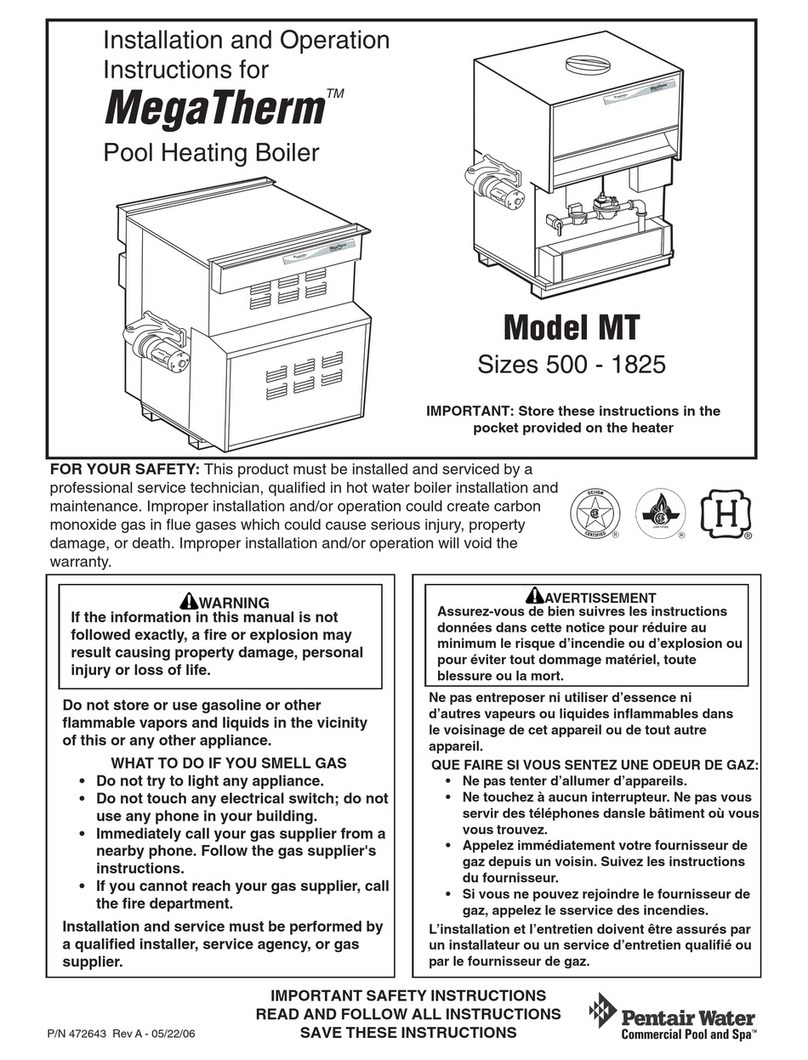
Pentair
Pentair MT Sizes 500 Installation and operation instructions
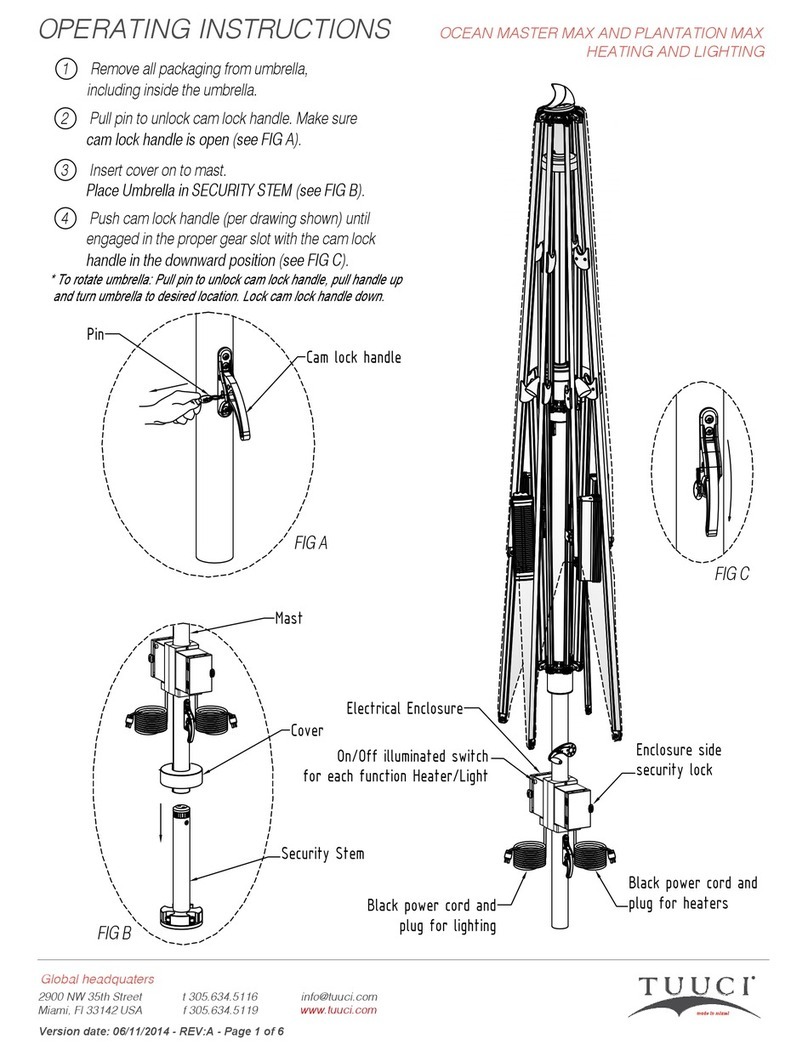
Tuuci
Tuuci OCEAN MASTER MAX operating instructions

Hayward
Hayward H150FD Service & installation manual
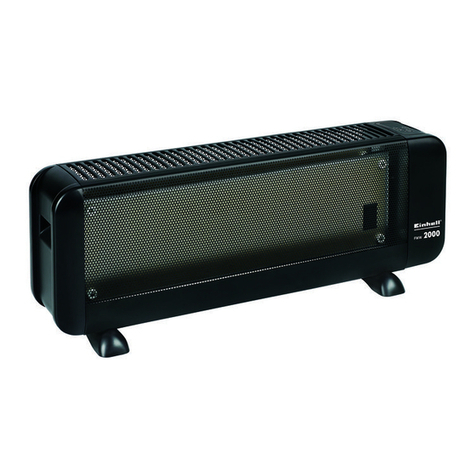
EINHELL
EINHELL FWW 2000 operating instructions
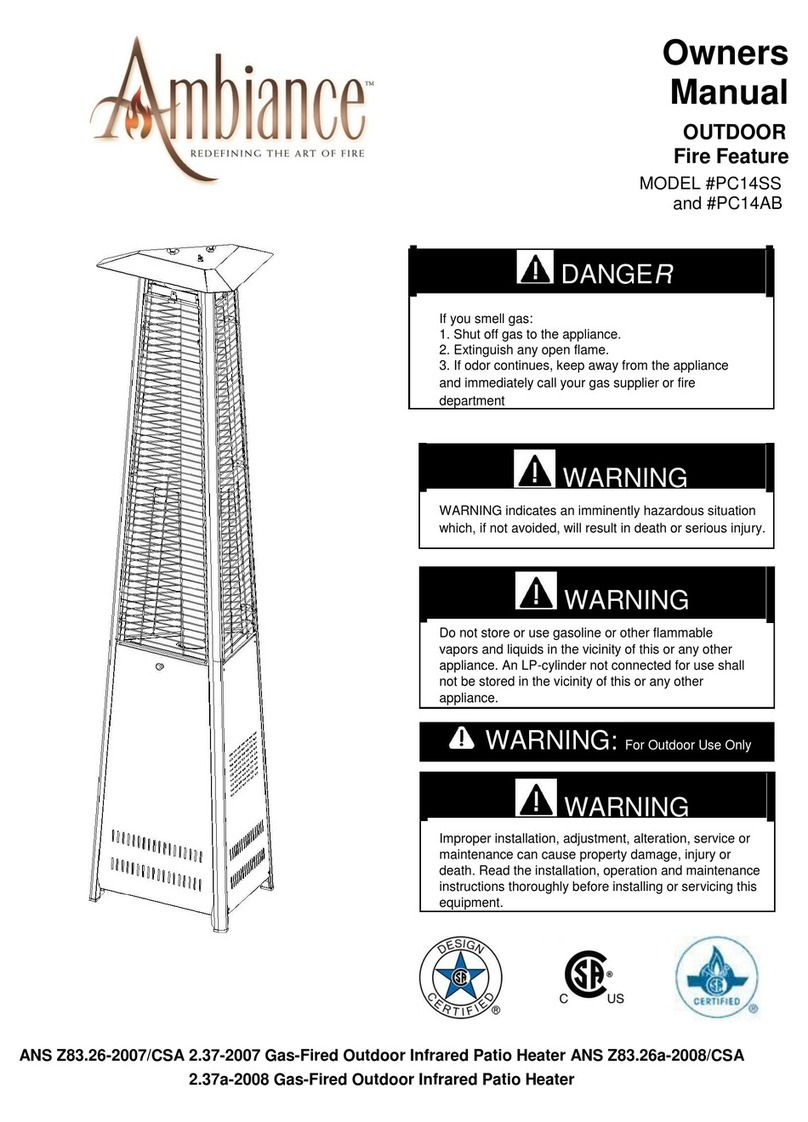
ambiance
ambiance pc14ss owner's manual

Intex Marketing
Intex Marketing HT30220 owner's manual
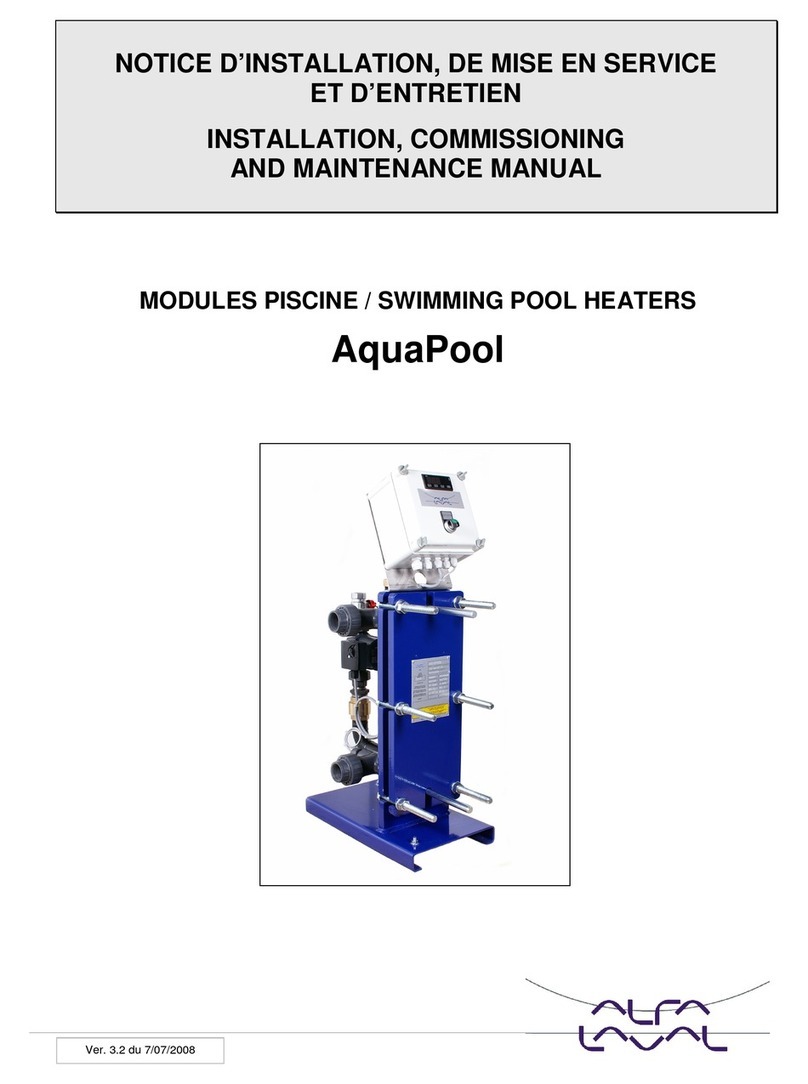
Alfalaval
Alfalaval AquaPool-7 Installation, commissioning and maintenance manual
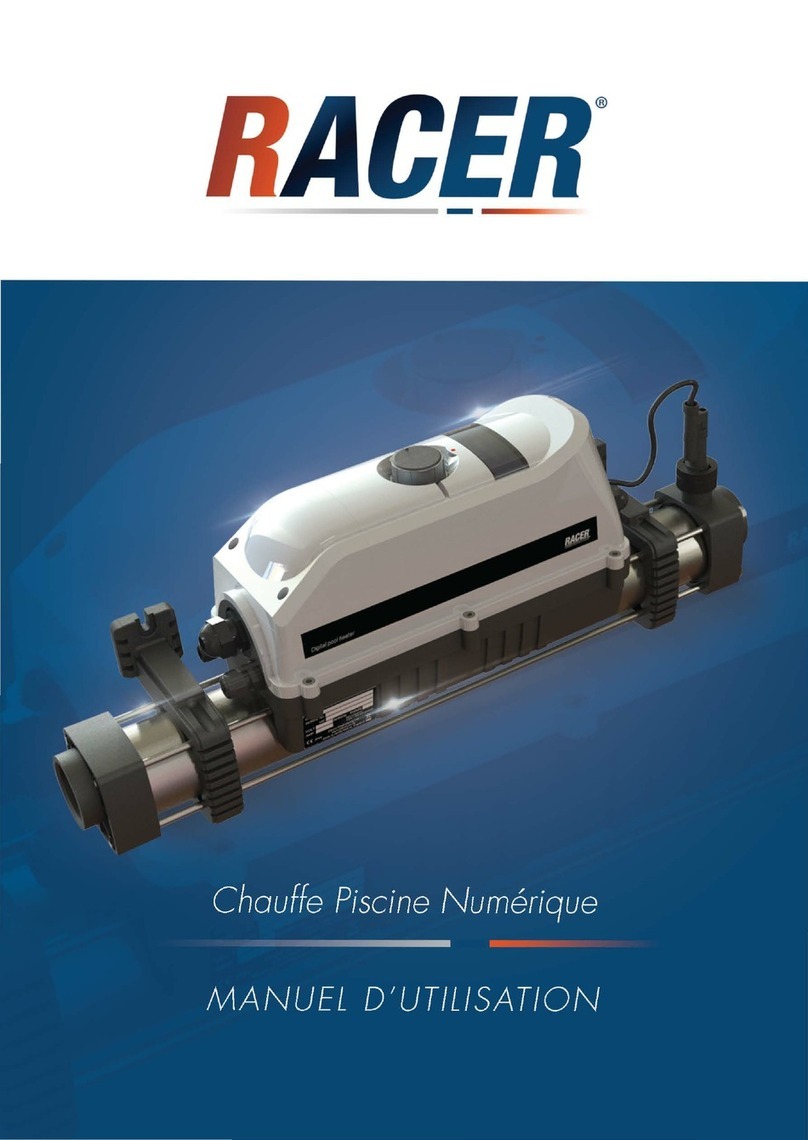
Racer
Racer Direct manual

Thermomart
Thermomart DTH101 quick start guide

Hayward
Hayward H150FD owner's manual
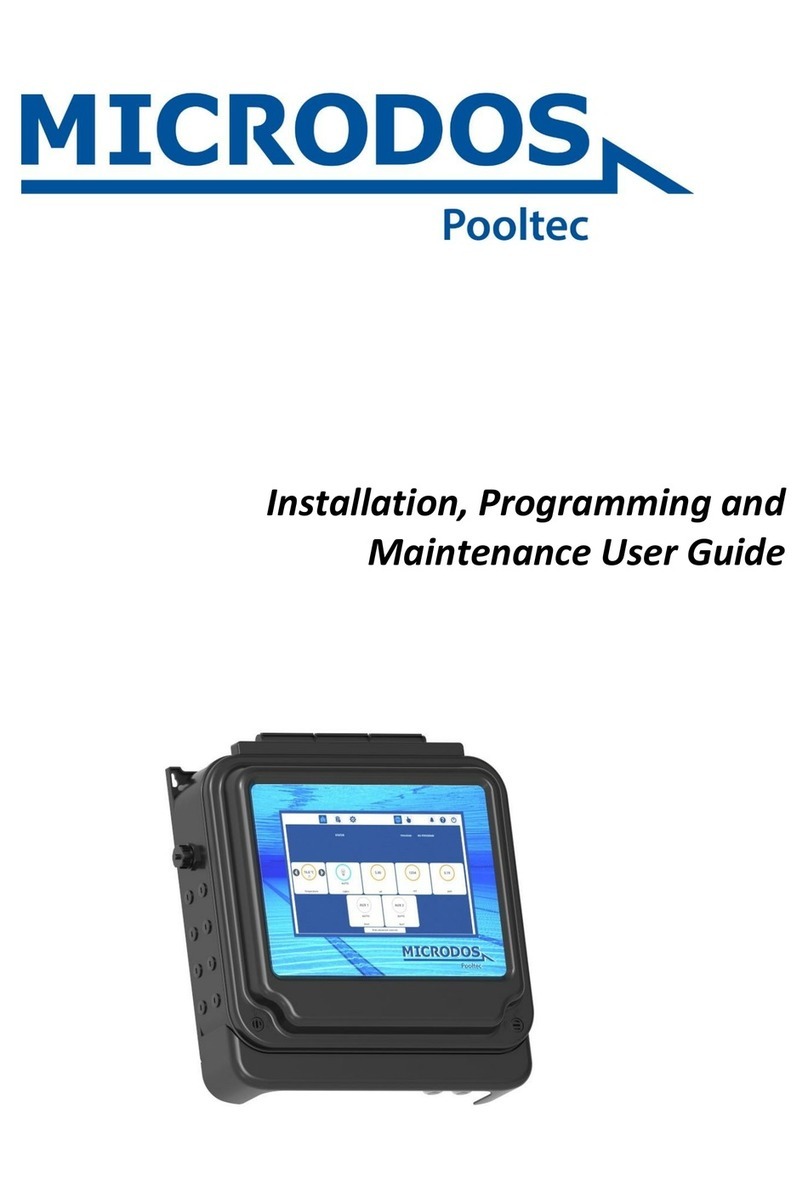
MICRODOS
MICRODOS Pooltec Installation, Programming and Maintenance Instructions

Magen eco-Energy
Magen eco-Energy UMA Solar Sunstar Solar Pool Heating Homeowner's manual
